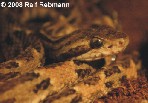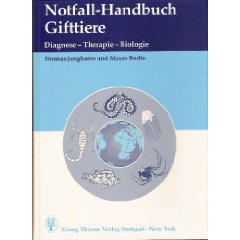|


| |
Bothrops
neuwiedi


Namen: Lanzenotter; Jararaca Pintada,
Neuwied's Lancehead; Lokale Namen:
Boca de Sapo, Bocuda, Cabeca de Capanga, Crucera, Jararaca, Jararaca
Cruzeira, Jararaca do Rabo Branco, Jararaca Pintada, Jararacussu,
Jararaquinha, Kiririog, Kyryry'o, Pina Machajuay, Rabo de Osso, Tira
Peia, Urutu, Vibora de la Cruz, Vibora de Rabo Blanco, Yara, Yarara,
Yarara Chica, Yarara de Cola Blanca, Yararaquina, Yoperojobobo
Unterarten: Wurden synonymisiert.
Alte Namen:
- Bothrops leucurus
- Bothrops urutu
- Bothrops atrox meridionalis
- Lachesis neuwiedi
- Bothrops neuwiedi goyazensis
- Bothrops neuwiedi paranaensis
- Bothrops neuwiedi neuwiedi
- Bothrops neuwiedii minasensis
- Bothrops neuwiedi meridionalis
- Bothrops neuwiedi fluminensis
- Bothrops neuwiedii fluminensis
- Bothrops neuwiedi urutu
Vorkommen: Brasilien (Rio Grande do Sul), Paraguay, Bolivien, Peru, Uruguay, Argentinien
(Jujuy, Salta, Formosa, Chaco, Tucumán, Santiago del Estero, Catamarca,
Córdoba, La Rioja, San Juan, San Luis, La Pampa, Mendoza, Santa Fe, Entre
Rios, Corrientes, Misiones)
Beschreibung: Die Tiere erreichen
eine durchschnittliche Länge von 65 cm, maximal 120 cm.
Toxine: Die Toxine wirken vor
allem auf die Blutgerinnung.
Symptome: Jeder Biss durch die
Schlange muss als lebensbedrohlich eingestuft werden. An der Bissstelle kommt es
zu lokalen Schmerzen, Schwellungen, Blasenbildungen, Blutungen, blutigen
Nekrosen und Abszessen. Aus den Punktionsstellen kommt es durch die
Ungerinnbarkeit des Blutes zu Blutungen. Allgemeine Zeichen sind Kopfschmerzen,
Übelkeit, Erbrechen, Durchfall, abdominelle Schmerzen, Krämpfen und
Kreislaufstörungen bis hin zum Kollaps.
Maßnahmen:
Die pressure-immobilization-Methode darf nicht
angewendet werden. Die betroffene Stelle ist ruhig zustellen. Der Patient muss
liegend in eine Klinik transportiert werden. Die weiteren Maßnahmen bis zur
Klinik erfolgen symptomatisch. Ein Antivenin ist vorhanden. Das Antivenin sollte
nur nach Rücksprache mit einer Giftnotrufzentrale erfolgen.
Literatur:
-

-
The Reptile Database
-
WCH Clinical Toxinology
-
Insights of local tissue damage and regeneration induced by BnSP-7, a myotoxin
isolated from Bothrops (neuwiedi) pauloensis snake venom.
-
Insights of local tissue damage and regeneration induced by BnSP-7, a myotoxin
isolated from Bothrops (neuwiedi) pauloensis snake venom.
-
Characterization of inflammatory reaction induced by neuwiedase, a P-I
metalloproteinase isolated from Bothrops neuwiedi venom.
-
Peptide mimicking antigenic and immunogenic epitope of neuwiedase from
Bothrops neuwiedi snake venom.
-
Toxoplasma gondii- effects of neuwiedase, a metalloproteinase from Bothrops
neuwiedi snake venom, on the invasion and replication of human fibroblasts in
vitro.
-
BnP1, a novel P-I metalloproteinase from Bothrops neuwiedi venom- biological
effects benchmarking relatively to jararhagin, a P-III SVMP.
-
Bactericidal and neurotoxic activities of two myotoxic phospholipases A2 from
Bothrops neuwiedi pauloensis snake venom.
-
Pharmacological evidence for a presynaptic action of venoms from Bothrops
insularis (jararaca ilhoa) and Bothrops neuwiedi (jararaca pintada).
-
Pathological alterations induced by neuwiedase, a metalloproteinase isolated
from Bothrops neuwiedi snake venom.
-
Envenoming by the South American pit viper Bothrops neuwiedi Wagler.
-
[Bites by snakes in the genus Bothrops- a series of 3,139 cases]
-
Snakebite in sheep.
-
A clinical and epidemiologic study of 292 cases of lance-headed viper bite in
a Brazilian teaching hospital.
-
Structural and functional characterization of a prothrombin activator from the
venom of Bothrops neuwiedi.
-
Muscular lesions induced by a hemorrhagic factor from Bothrops neuwiedi snake
venom.
-
Amerikanische Lanzenottern – Wikipedia
-
Bothrops neuwiedi -
Wikipedia, the free encyclopedia
|